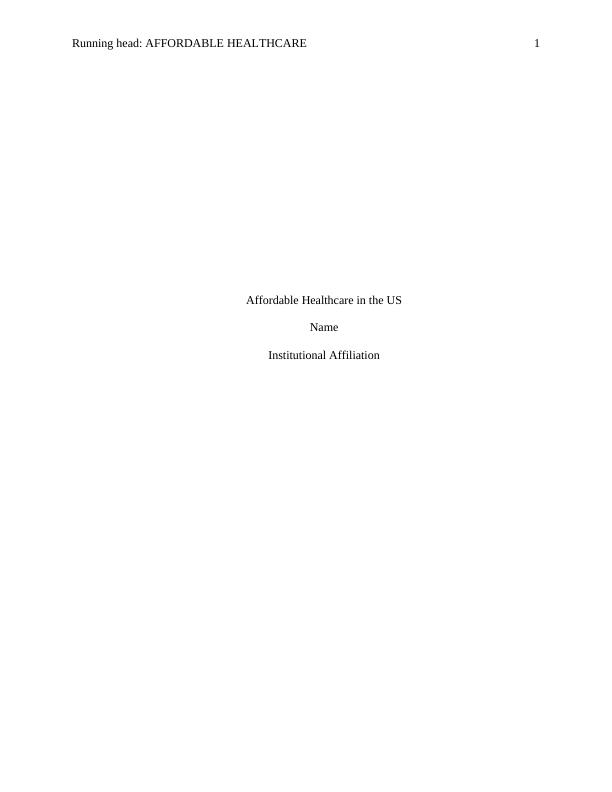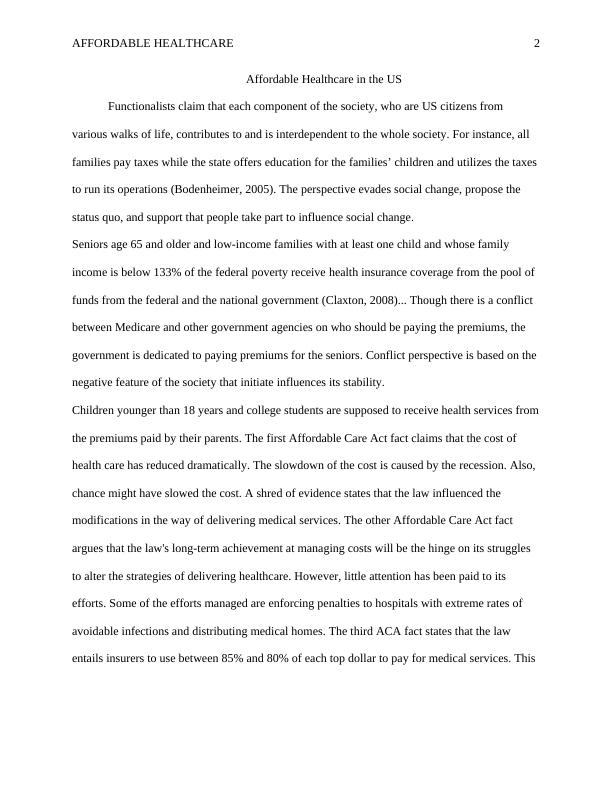Affordable Healthcare in the US
5 Pages1090 Words356 Views
Added on 2023-06-10
About This Document
This article discusses the Affordable Care Act and its impact on healthcare coverage in the US. It explores the different perspectives on healthcare coverage and premiums, including functionalist, conflict, interactionist, and individualistic perspectives. The article also highlights the different groups that are entitled to health insurance coverage and how they contribute to the premiums.
Affordable Healthcare in the US
Added on 2023-06-10
ShareRelated Documents
End of preview
Want to access all the pages? Upload your documents or become a member.
Low Income Subsidy in Medicaid Health Insurance
|5
|875
|352
Affordable Health Care Act and Medicaid Expansion
|17
|1605
|184
The patient Protection and Affordable
|5
|1032
|15
Program Planning And Evaluation | Assignment
|4
|557
|14
Health Insurance and the Affordable Care Act
|5
|1097
|406
The Role of Government in the U.S. Health Care System
|6
|1512
|494


